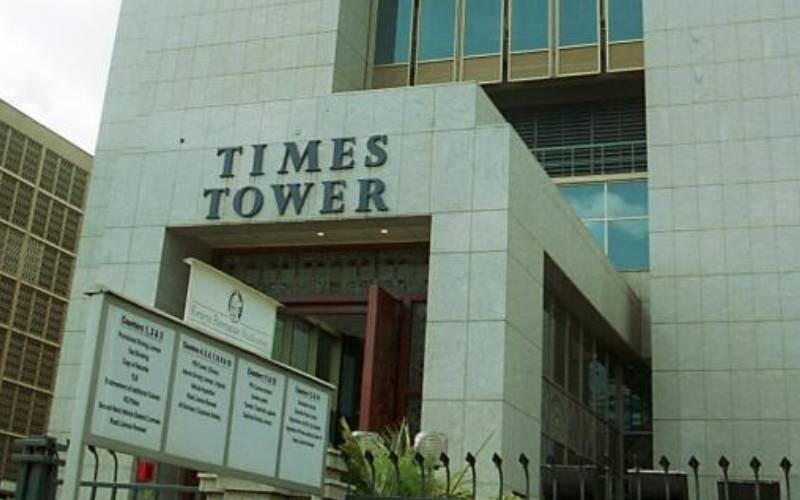Most of us are not motivated spendthrifts, but we still give our best in avoiding downright retail exploitation. We know when to hunt for good bargains; we are smart enough to turn a craving for an expensive high-end packet of peanuts into a one month supply of a 15-centimeter jaw dropping roadside roasted maize and get by.
That is why many consumers will find it ridiculous to buy a 500ml bottle of their favourite bottle for Sh400 while the recommended retail price is Sh180 unless we are talking about that new techie billionaire or the old money retired businessman who are doing it for the thrill.
For most consumers, it does not make sense to buy taste expensively. But some bars would like you to believe otherwise and have made exorbitant pricing a common practice.
While we all live in the willing buyer-willing seller environment where supply and demand arrive at an agreed curve, there is a reason the recommended retail price is clearly printed for buyers to see.
It is because with some sensible mark up, it makes business sense for the bar and for all of us to enjoy our tipple and even share a bottle or two of the froth with the friend who for other reasons on that particular day insists on a glass of water while maintaining a sullen face.
Other brands
Other countries have laws and regulations for such over-hyped mark-ups. The beverage industry runs on a three-tier system that includes the manufacturer, the distributors and the retailer.
The manufacturer of the product sells it to distributors who in turn gets to the retail outlets before consumers close the chain.
For the buyer and bar owner, understanding and navigating these three levels is of the utmost importance because it gives one a sense of what price on average a customer and a seller can expect the end product to cost.
For example, distributors can represent multiple brands, and they have sales representatives who go out with their product to the retailers.
As a supplier, you want to influence the distributors to move more of your products as opposed to those of other brands.
To do so, you can put on incentive contests, do promotions with them, or even go on store visits with the sales representatives.
As a distributor, you definitely want to focus extra energy on big, volume-driving retail accounts. As a retailer, you would want to keep an eye on your costs while maintaining relatively low prices and high quality. In the end, what ensures that a brand is sold is how well it is positioned as a quality product while priced fairly.
That is the bottom line. The end consumer only looks at ‘quality’ and how fairly priced it is. In the end, unfair pricing leads to bar owners and the well-meaning manufacturers to go out of business.Unfair pricing does the whole chain injustice and can only be addressed by pricing closest to the recommended retail price.
Liquor stores
Stay informed. Subscribe to our newsletter
Above the RRP, a retailer needs to know some basic mathematics to survive. Restaurants sell alcohol by the bottle for consumption on the premises. Liquor stores sell unopened bottles for consumption off-premises. The economic environments in which both establishments operate are different, as is the pricing policy.
Bars typically mark up their drinks much more than liquor stores—the margin by which is free in Kenya. Restaurants also have a ‘pour cost’ room compared to stores.
A pour cost is all those things that include free drink promotions to ensure higher sales of the anchor brand.
Other factors affecting a drink markup in bars include free drinks and theft.While bars do not often get much volume discount, they have one advantage—those that sell bottled beer have almost zero costs save for serving. Establishments selling canned beer at recommended retail prices have the highest advantage.
It is, therefore, important that every bar owners knows which class they want to be. But one thing is clear—those who do none- recyclable beer bottles or canned beer gain a lot as they reduce most of the expenses associated with recyclable beer bottles.
In the near future we might as well see liquor stores that are also bars if the unfair pricing continues.
The general rule remains: as along as an establishment is well marketed and is known for quality—the closer they sell at the recommended retail prices, the higher the volumes they push.
Ms Magawa is an aspiring PR [email protected]
 The Standard Group Plc is a
multi-media organization with investments in media platforms spanning newspaper
print operations, television, radio broadcasting, digital and online services. The
Standard Group is recognized as a leading multi-media house in Kenya with a key
influence in matters of national and international interest.
The Standard Group Plc is a
multi-media organization with investments in media platforms spanning newspaper
print operations, television, radio broadcasting, digital and online services. The
Standard Group is recognized as a leading multi-media house in Kenya with a key
influence in matters of national and international interest.
 The Standard Group Plc is a
multi-media organization with investments in media platforms spanning newspaper
print operations, television, radio broadcasting, digital and online services. The
Standard Group is recognized as a leading multi-media house in Kenya with a key
influence in matters of national and international interest.
The Standard Group Plc is a
multi-media organization with investments in media platforms spanning newspaper
print operations, television, radio broadcasting, digital and online services. The
Standard Group is recognized as a leading multi-media house in Kenya with a key
influence in matters of national and international interest.





